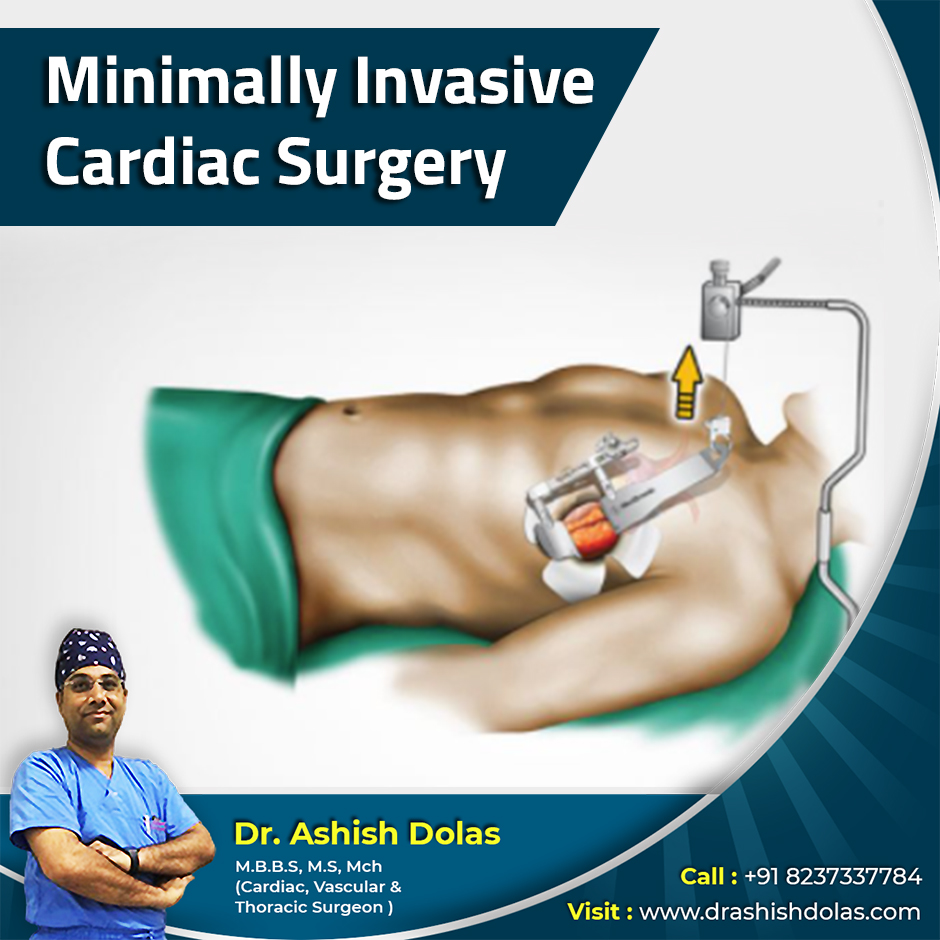Minimally Invasive Cardiac Surgery is done only in selective cases. It is also known as Keyhole surgery or Limited Access Coronary Artery Surgery. It includes Port-Access Coronary Artery Bypass (PACAB or Port CAB) and Minimally Invasive Coronary Artery Bypass Graft (MIDCAB). For all the procedure contact Dr. Ashish Dolas, the Best Cardiac Surgeon in Pune.
It is an alternative option to standard bypass surgery (CABG). Small incisions (ports) are made in the chest. Chest arteries or veins from your leg are attached to the heart to “bypass” the clogged coronary artery or arteries. The instruments are passed through the ports to perform the bypasses. The surgery is performed while the heart keeps beating. The patient requires to stay a few days in the hospital after the surgery. It takes less time in recovery comparing to standard bypass surgery (CABG).
Minimally Invasive Cardiac Surgery : Reason for the Procedure
- Reduced trauma to the body
- Less pain & scarring
- Less need for blood transfusions
- Achieve faster recovery
- Less blood loss
Pinpoint imaging in minimally invasive surgery
One of the most significant developments in surgery over the past few decades has been a shift towards minimally invasive (MI) procedures. This change in methodology has been driven by the associated reduction in trauma to the patient from smaller incisions, which results in shorter hospital stays and reduced recovery times. One major obstacle of minimally invasive surgery (MIS) is the lack of visibility to the world being operated on. While imaging scopes are continually improving, none have been able to offer angiographic image functionality along with high definition white light until now. The PINPOINT Endoscopic Fluorescence Imaging System could also be used similarly to other endoscopes commonly utilized in laparoscopic surgeries performed today. In addition to providing the standard images obtained through a standard endoscope, PINPOINT enables surgeons performing minimally invasive procedures to see blood flow in vessels and tissue perfusion in real-time while in the operating room.
PINPOINT also offers surgeons the unique ability to view images in an “overlay” mode, which displays a combined visible and fluorescence image. The overlay model allows surgeons to clearly envision both anatomical structures and physiologic information in a single image – which has been described as the best of both worlds. The overlay mode can act as a surgical map allowing the surgeon to clearly identify leaks while still remaining keenly aware of anatomical orientation. By providing clinically relevant anatomic and physiologic information simultaneously and in real-time, PINPOINT can equip surgeons performing MIS procedures with the information they need to make critical decisions in the operating room. PINPOINT can increase surgeon confidence in performing MIS surgeries and its use has been associated with lower rates of potentially costly post-operative complications. for more information
Advantages of Minimally invasive surgery
Increased safety: with a small incision, there’s less trauma to the body and far less blood loss.
Decreased scarring: most incisions just take a stitch or two to shut.
Faster recovery: whereas recovery from traditional surgery typically takes six to eight weeks, patients who have undergone minimally invasive usually takes recovery in a just fortnight.
Decreased length of hospital Stay: most MICS procedures are associated with 23-hour discharge or schedule outpatient surgery.
For any other information regarding the heart surgery contact Dr. Ashish Dolas, the best Heart Surgeon in Pune.

